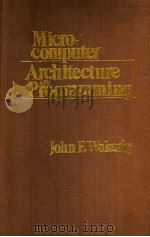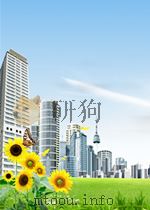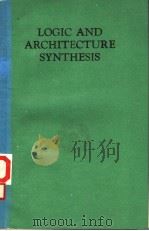《IBM CPU AND STORAGE ARCHITECTURE》
| 作者 | JOE LEBEN JIM ARNOLD 编者 |
|---|---|
| 出版 | DATA PROCESSING TRAINING SERIES |
| 参考页数 | 182 |
| 出版时间 | 没有确切时间的资料 目录预览 |
| ISBN号 | 无 — 求助条款 |
| PDF编号 | 819551418(仅供预览,未存储实际文件) |
| 求助格式 | 扫描PDF(若分多册发行,每次仅能受理1册) |
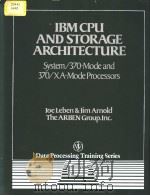
ContentsIntroduction5
How to Use This Book6
Section One IBM LARGE-SCALE PROCESSORSChapter 1 Processor Evolution and System Structure3
Lesson 1.1 IBM Large-Scale Processor Evolution4
Computing System Architecture4
Early Processors5
System/360 Processors5
System/370 Processors7
System/370 Architectural Extensions8
3030 Processors8
4300 Processors8
3080 Processors9
System/370 Extended Architecture9
Plug-Compatible Equipment10
IBM Personal Computer10
Lesson 1.2 Architecture Design Objectives13
Computing System Goals13
Productivity13
Access to Information14
Growth14
Reliability14
Large-Scale Processor Design Objectives14
Modularity and Expandability14
Application Flexibility15
I/O Device Flexibility15
Compatibility15
Programming System Flexibility16
Reliability,Availability,and Serviceability16
Lesson 1.3 Computing System Structure18
Central Processing Unit Structure18
CPU Components18
CPU Operation19
Program-Status Word20
Registers20
Main Storage Structure20
Storage Addressing21
Boundary Alignment21
Bits and Half-Bytes23
Section Two MAIN STORAGEChapter 2 Data Formats31
Lesson 2.1 Binary and Character Data32
Fixed-Point Binary Data32
Fixed-Point Arithmetic33
The Sign Bit33
Fullword and Halfword Numbers33
Positive Fixed-Point Numbers34
Negative Fixed-Point Numbers34
Two's Complement Notation34
Two's Complement Example35
Two's Complement Addition35
Loading 16-Bit Negative Numbers35
Binary Arithmetic Instructions36
Binary Logical Data36
Character Data37
The BCD Coding Scheme37
The EBCDIC Coding Scheme37
The ASCII Coding Scheme39
Zoned-Decimal Data39
Lesson 2.2 Packed-Decimal and Floating-Point Data42
Packed-Decimal Data42
Packed-Decimal Sign Information42
Converting to Packed and Binary43
Packed-Decimal Arithmetic44
Floating-Point Data45
Scientific Notation45
Floating-Point Numbers45
Floating-Point Data Variations46
Chapter 3 Main Storage Organization55
Lesson 3.1 Virtual Storage56
Virtual Storage56
Virtual Storage Implementation56
Dynamic Real Storage Assignment57
Transparent Operation57
Virtual and Transparent58
Virtual Storage Size58
Virtual Storage Operating Systems58
DOS/VSE and OS/VS1 Virtual Storage Management58
MVS Virtual Storage Management59
MVS/XA Virtual Storage Management60
Virtual Storage Use61
Addressing Modes61
System/360 Addressing61
System/370 Addressing62
Extended Addressing62
System/370 Extended Architecture63
Lesson 3.2 Real Storage66
Fixed Main Storage Locations66
Assigned Main Storage Locations67
Addresses of the Assigned Locations67
Assigned Location Functions67
Program-Status Word Locations68
Interrupts68
Old PSW Locations69
New PSW Locations69
Assigned Locations for I/O Processing70
System/370 I/O Operations70
370/XA I/O Operations71
Section Three CENTRAL PROCESSING UNITChapter 4 Machine Instructions79
Lesson 4.1 Instruction Operands80
Assembler Language Instructions80
Assembler Listing81
Operand Types82
Register Operands82
The Load Register(LR)Instruction83
Storage Operands83
Add(A)Instruction83
Base/Displacement Addressing84
Base/Displacement Address Format84
Assembler Listing85
Base Register Loading86
Storage Address Calculation86
Self-Relocation87
Index Registers88
Immediate Operands89
Move(immediate)(MVI)Instruction89
Lesson 4.2 Instruction Formats93
Machine Instruction Formats93
RR-Format Instructions94
RRE-Format Instructions95
RX-Format Instructions95
RS-Format Instructions96
SI-Format Instructions97
S-Format Instructions98
SS-Format Instructions98
Single Operand Length99
Two Operand Lengths99
Register SDecifications100
SSE-Format Instructions100
Lesson 4.3 Instruction Functions104
Instruction Categories104
Expanded Functional Categories105
Fixed-Point Arithmetic Instructions105
Logical Instructions106
The AND Operation107
The OR Operation107
The EXCLUSIVE-OR Operation107
The Mask107
General Register Shifting Instructions108
General Register Load and Store Instructions108
Data Moving,Conversion,and Translation Instructions109
Decimal Instructions110
Floating-Point Instructions110
Special-Purpose Control Instructions112
Privileged I/O Instructions112
Privileged System-Control Instructions113
Lesson 4.4 Compare and Branch Instructions117
Compare Instructions117
The PSW Condition-Code Bits118
Condition-Code Setting118
Branch Instructions119
Testing for Operands Equal120
Testing for First Operand Low120
Testing for First Operand High120
Testing for Multiple Values120
Extended Mnemonics121
Chapter 5 CPU Operation127
Lesson 5.1 Instruction Execution128
Processor Structure128
Program-Status Word(PSW)129
EC-Mode PSW129
XA-Mode PSW130
BC-Mode PSW130
Next Instruction Address130
Instruction Execution Cycle130
Add Instruction Execution130
Locating the Instruction131
Updating the PSW132
Calculating the Storage Operand Address132
Performing the Addition133
Repeating the Cycle134
Compare and Branch Instructions134
Compare Instruction Execution135
Branch Instruction Execution135
Conceptual Sequence135
Lesson 5.2 The Interrupt System139
Interrupt Processing139
The Six Interrupt Types139
Input/Output Interruption140
External Interruption140
Program Interruption140
Supervisor-Call Interruption140
Machine-Check Interruption140
Restart Interruption140
Assigned PSW Locations141
A Machine-Check Interruption141
PSW Storing and Loading142
Interrupt Handler Operation142
Other Interrupt Types142
CPU State Alternatives143
Wait or Running State143
Stopped or Operating State143
Problem or Supervisor State144
PSW State Alternative Bits144
Chapter 6 CPU Features151
Lesson 6.1 General CPU Features152
Storage Protection152
The Access-Control Bits153
The Fetch-Protection Bit153
The Reference and Change Bits153
Software Storage Protection154
Compatibility Features154
The Direct Control Feature154
Dynamic Address Translation154
The Monitoring Feature155
Program Event Recording155
Main Storage Performance156
Access Width156
Cycle Time156
Storage Interleaving156
High-Speed Buffer156
Lesson 6.2 Multiprocessing Concepts160
Loosely Coupled Multiprocessing160
No Direct Connection160
Sharing SPOOL Devices161
Connecting Processors Together162
Loosely Coupled Multiprocessing Differences163
Tightly Coupled Multiprocessing163
Attached Processors164
True Tightly Coupled Multiprocessing164
Lesson 6.3 Multiprocessing Hardware Features167
Assigned Main Storage Locations167
Absolute Main Storage168
Real Main Storage168
The Prefixing Feature169
Prefixing Example 1169
Prefixing Example 2170
Prefixing Example 3170
Other Multiprocessing Hardware Features171
Lesson 6.4 Timing and Clock Features174
Time-of-Day Clock174
Clock Comparator175
CPU Timer176
Interval Timer177
Index181
《IBM CPU AND STORAGE ARCHITECTURE》由于是年代较久的资料都绝版了,几乎不可能购买到实物。如果大家为了学习确实需要,可向博主求助其电子版PDF文件(由JOE LEBEN JIM ARNOLD DATA PROCESSING TRAINING SERIES 出版的版本) 。对合法合规的求助,我会当即受理并将下载地址发送给你。
高度相关资料
-

- MIRCROPROCESSOR ARCHITECTURE AND PROGRAMMING
- 1977 COPYRIGHT
-

- Japanese gardens and architecture
- 1962 Japan Travel Bureau
-
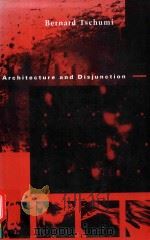
- Architecture and disjunction
- 1994 The MIT Press
-

- Computer architecture and design
- 1989 Addison-Wesley
-
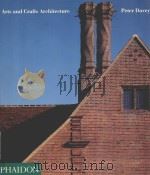
- ARTS AND CRAFTS ARCHITECTURE
- 1995 PHAIDON
-

- MICROCOMPUTER ARCHITECTURE AND PROGRAMMING
- 1981 JOHN WILEY & SONS
-

- UNDERSTANDING COMPUTERS MEMORY AND STORAGE
- 1990 TIME-LIFE BOOKS
-
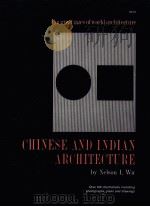
- CHINESE AND INDIAN ARCHITECTURE
- 1963 GEORGE BRAZILLER
-

- WHARF MANAGEMENT STEVEDORING AND STORAGE
- 1921 D. APPLETON AND COMPANY
提示:百度云已更名为百度网盘(百度盘),天翼云盘、微盘下载地址……暂未提供。➥ PDF文字可复制化或转WORD

